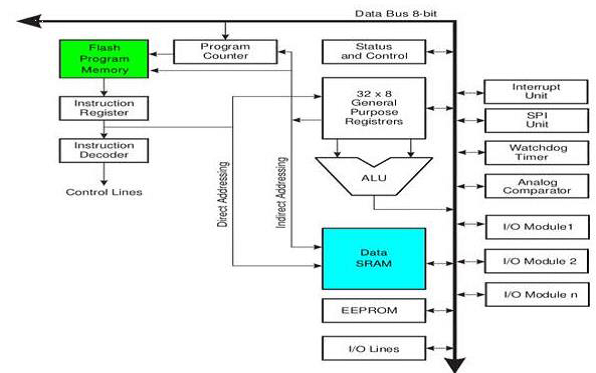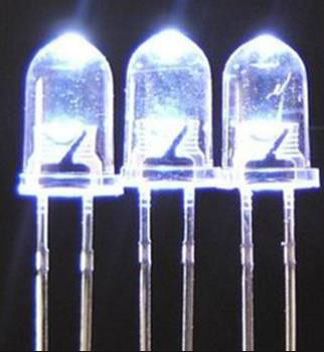Ijraset Journal For Research in Applied Science and Engineering Technology
- Home / Ijraset
- On This Page
- Abstract
- Introduction
- Conclusion
- References
- Copyright
Pillbox: A Smart Solution for Personalized Medication Scheduling and Monitoring
Authors: Rukmini Bhat B, Preethi M, Reshma
DOI Link: https://doi.org/10.22214/ijraset.2024.65975
Certificate: View Certificate
Abstract
Medication non-adherence, particularly among elderly patients, is a global healthcare concern that leads to increased morbidity, healthcare costs, and preventable hospitalizations. To address this, we propose an Intelligent Pillbox that leverages the Internet of Things (IoT) to ensure patients take their medication on time. The system integrates hardware such as Arduino microcontrollers, infrared sensors, and a GSM module to monitor medication intake and send notifications to caregivers through an Android application. This paper details the design, implementation, and testing of the system. We tested the system for accuracy in detecting missed pills, GSM notifications, and user interaction through the mobile app. Results indicate that the system is highly reliable, providing timely alerts and improving medication adherence. Future enhancements include integrating biometric authentication and additional health monitoring features. The Intelligent Pillbox holds significant promise in enhancing patient care and reducing caregiver burden.
Introduction
I. INTRODUCTION
Medication adherence is crucial for the effective management of chronic diseases, yet it remains one of the most significant challenges in healthcare. According to the World Health Organization (WHO), adherence to long-term therapy for chronic illnesses in developed countries averages only 50%. The situation is even worse in developing countries, with a large proportion of the population unable to follow prescribed medication regimens, leading to poor health outcomes.
Non-adherence can result in avoidable complications, hospitalization, and even death, particularly among the elderly and those with cognitive impairments. The reasons for non-adherence are varied and include forgetfulness, lack of understanding, and intentional decisions not to take medication due to side effects. Despite the critical nature of the problem, many existing solutions focus only on reminder systems that fail to account for real-time monitoring and feedback.
The increasing availability of the Internet of Things (IoT) in healthcare presents an opportunity to develop systems that can actively monitor medication intake and provide instant feedback. IoT refers to the interconnectedness of physical devices that can communicate and exchange data over the internet. In healthcare, IoT devices can be used to monitor patient health remotely, allowing for timely intervention when issues arise.
This paper presents an IoT-based solution—the Intelligent Pillbox[1]—designed to assist patients, particularly the elderly, in adhering to prescribed medication regimens. By integrating hardware components such as infrared (IR) sensors and GSM [2] modules with a mobile app interface, this system ensures that patients are reminded to take their medication, while caregivers are notified in real-time of any missed doses.

Fig. 1 Pillbox
The following sections will outline the literature on existing solutions, the methodology of the system design and implementation, testing and results, and future enhancements that could further improve the system's functionality.
II. LITERATURE REVIEW
Several systems have been developed to address the issue of medication adherence. In paper [3] proposed a Smart Medicine Dispenser that uses IoT to remind patients to take their medications on time. This system included compartments for organizing pills and sent reminders to patients via a mobile app. While the system increased medication adherence, it lacked real-time feedback for caregivers, a gap that our Intelligent Pillbox aims to fill.
In paper [10] introduced a remotely programmable smart pillbox with detachable columns to enhance portability for patients who frequently travel. The system provided real-time monitoring of pill intake via wireless communication, but did not account for patients with cognitive impairments who may still forget to take their medication.
In paper [4] developed the PillHelper system, which integrates sensors and an Android application to help patients keep track of their medication schedules [6] . Although this system automates reminders, it requires manual confirmation of medication intake, leaving room for user error.
In comparison to these systems, the Intelligent Pillbox [7] differentiates itself by focusing on caregiver involvement through real-time notifications when medication is missed. The use of a GSM module ensures that notifications can be sent even when internet connectivity is limited, making it more reliable in rural or remote areas. Additionally, our system’s use of IR sensors for detecting pill intake provides an automated process that reduces the possibility of user error, especially in elderly patients with memory issues.
III. METHODOLOGY
A. System Architecture
The Intelligent Pillbox consists of two primary components: the hardware (pillbox with sensors and Arduino microcontroller) and the software (mobile application for monitoring and notifications).

Fig 2. Block diagram
The hardware section includes:
- Arduino Microcontroller: Responsible for coordinating the sensors and communication modules.
- IR Sensors: Detect when a pill is removed from the compartment.
- GSM Module: Sends notifications via SMS to caregivers when medication is missed or when the pillbox needs to be refilled.
- Buzzer and LED Indicators: Alert the patient when it's time to take their medication.
The software component is an Android application [8] developed using Android Studio. The app allows patients or caregivers to input medication schedules, view notifications, and track missed doses. The system architecture[ 9] ensures that all components work together seamlessly to monitor medication intake and provide real-time feedback to both patients and caregivers.

Fig 3: System Architecture
B. Hardware Implementation
The hardware setup includes:
1) Arduino Uno: The microcontroller used to manage input and output signals from sensors and communication devices [9].

Fig 4:Arduino UNO
2) IR Sensors: Placed inside the pillbox to detect when a pill is taken. These sensors emit infrared light, and when an object (a pill) interrupts the beam, the system registers the action [11].

Fig 5 IR sensor
3) GSM Module (SIM800): Used to send text message notifications to the caregiver’s phone. This module ensures that notifications are sent even in areas with poor internet connectivity [12].

Fig 6 GSM
4) Load Cell: Measures the weight of the pills in each compartment to detect when a refill is needed [14].

Fig 7 Load cell
5) Buzzer and LEDs: Provide audible and visual reminders to the patient when it is time to take their medication[15].

Fig 8 LED
C. Software Implementation
The Android application acts as the user interface for the Intelligent Pillbox system. Developed using Android Studio, the app allows the patient or caregiver to:
- Set Medication Schedules: Users can input the time and dosage for each pill.
- Receive Alerts and Notifications: The app sends reminders when it’s time to take a pill and logs whether the pill was taken or missed.
- View Medication History: Users can see a history of past doses, including those missed. The communication between the Arduino microcontroller and the Android app is facilitated through the GSM module, ensuring seamless operation even in the absence of internet connectivity.
IV. TESTING AND RESULTS
A. Functional Testing
Functional testing was conducted to ensure that the pillbox operated as expected in various scenarios. These tests included:
- Detection of Pill Removal: The IR sensors accurately detected when a pill was removed from the pillbox, and the corresponding notification was sent to the caregiver.
- GSM Notification: The GSM module successfully sent notifications when pills were missed or the pillbox was empty. Notifications were received within 5 seconds of a missed dose.
- User Interaction: The Android app provided timely alerts and allowed users to easily track medication history.
B. Performance Testing
Performance testing focused on the system's response time and reliability under different network conditions:
- Network Variability: The system was tested under varying GSM signal strengths. Even with low signal strength, notifications were sent within 10 seconds.
- Battery Consumption: The Arduino and GSM module consumed minimal power, allowing the pillbox to operate for several days without needing a recharge.
C. Results
The Intelligent Pillbox successfully met the project’s objectives of ensuring medication adherence and providing real-time feedback to caregivers. Key results include:
- 100% detection rate for pills removed from the pillbox.
- Reliable notifications sent within 5-10 seconds of missed doses.
- User-friendly interface that enabled patients and caregivers to manage medication schedules effectively.

Fig 9: Connectivity
The results of the testing indicate that the Intelligent Pillbox is a practical and reliable solution for improving medication adherence, particularly for elderly patients. The integration of real-time feedback via the GSM module ensures that caregivers are immediately informed of any missed doses, providing peace of mind and reducing the likelihood of non-adherence.
The system's reliance on simple yet effective components such as IR sensors and the GSM module makes it affordable and easy to deploy. However, there are potential limitations, such as the reliance on GSM signals in remote areas where coverage may be inconsistent. Future work will address these limitations by integrating additional connectivity options such as Wi-Fi or Bluetooth[16].
Conclusion
The Intelligent Pillbox is a robust solution for addressing the critical issue of medication non-adherence. By integrating IoT technology with a user-friendly interface, the system ensures that patients are reminded to take their medication while providing caregivers with real-time feedback. The results demonstrate the effectiveness of the system in improving medication adherence, particularly for elderly patients with cognitive impairments. Future enhancements could include biometric authentication, integration of additional health monitoring sensors, and expansion of the system’s functionality to include video conferencing with healthcare providers.
References
[1] Antoun, W., Abdo, A., & Al-Yaman, S. (2021). An IoT Based Smart Medicine Dispenser Model for Healthcare. IEEE Middle East Conference on Biomedical Engineering. [2] Brianna, A., Alipour, A., & Gilmour, L. (2020). IoT-Based Smart Medicine Dispenser to Control and Supervise Medication Intake. IEEE International Conference on IoT Systems. [3] Kamal, R., Jabatini, J., & Nisha, J. (2021). Automated Low-Cost Pill Dispenser Using Arduino and IoT with 24 Hours Monitoring. International Research Journal of Modernization in Engineering Technology and Science, 3(8), 2582-5208. [4] Mallikarjun, K., Rajathreddy, S., & Maaz, S. (2023). Design and Development of Smart Medicine Dispenser IoT. International Journal of Research Publication and Reviews, 4(8), 1745-1750. [5] Patil, C. H., Lightwala, N., & Sherdiwala, M. (2021). An IoT-Based Smart Medicine Dispenser [6] Model for Healthcare. IEEE International Conference on Biomedical Engineering, Pune, India. [7] Iadanza, E., & Krasinski, P. (2020). Smart Pill Dispenser with Monitoring System. IEEE Xplore, 978-1-6654-4043-1. [8] Ermisoglu, E., Mohammed, M. N. A., & Shree, B. S. (2021). IoT-Based Automatic Medicine Tracker. International Journal of Research Publication and Reviews, 4(8), 1745-1750 [9] Wissam Antoun, Ali Abdo and Suleiman Al-YamaN, Smart Medicine dispenser ,IEEE 4th Middle East Conference on Biomedical Engineering, 2018. [10] Brianna Abbey, Anahita Alipour, Logan Gilmour, A Remotely Programmable Smart Pillbox for Enhancing Medication Adherence, 28th Annual International Conference of IEEE, 2006. [11] Razvan BOGDAN, Mihael CRISAN-VIDA, Pill Helper - an application for treatment administration, IEEE 12th International Symposium on Applied Computational Intelligence and Informatics, SACI 2018. [12] Fei Hu, Yang Xiao, Qi Hao, Intelligent medicine box for medication management system using IOT, Proceedings of the Second International Conference on Inventive Systems and IEEE Xplore, 2018. [13] R. Al-Shammary1,S.Esmaeili, The Design of a Smart Medicine , 26th Iranian Conference on Electrical Engineering, 2018. [14] Xun-Cong Wang1, Kuan-Hui Tu1, A Smart Pill Box with Remind and Consumption Confirmation Functions, IEEE 4th Global Conference on Consumer Electronics (GCCE), 2015. [15] Shashank Shinde, Tejas Kadaskar, A Smart Pill Box with Remind and Consumption Using IOT, International Research Journal of Engineering and Technology (IRJET), 2017. [16] Naga Swetha R1, Mahendar2, SMART PILL BOX USING IOT, Assistant Professor, Dept. of ECE, A G I (JNTUH) Hyderabad, 2018.
Copyright
Copyright © 2024 Rukmini Bhat B, Preethi M, Reshma . This is an open access article distributed under the Creative Commons Attribution License, which permits unrestricted use, distribution, and reproduction in any medium, provided the original work is properly cited.

Download Paper
Paper Id : IJRASET65975
Publish Date : 2024-12-17
ISSN : 2321-9653
Publisher Name : IJRASET
DOI Link : Click Here
 Submit Paper Online
Submit Paper Online

